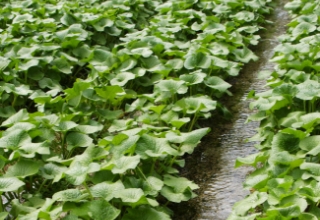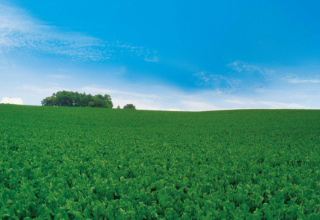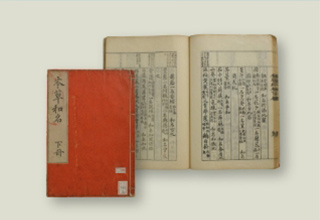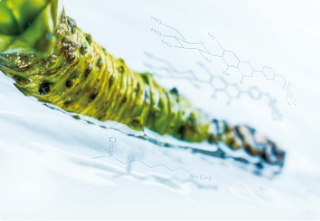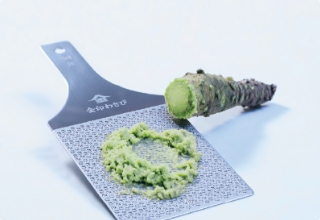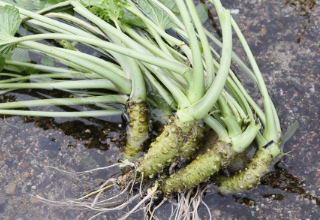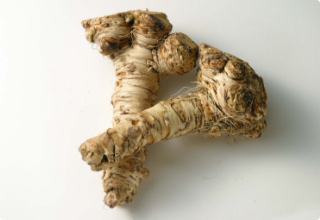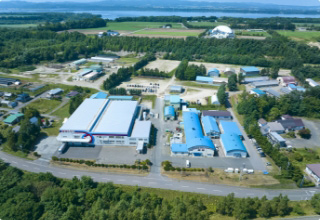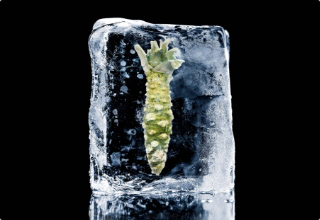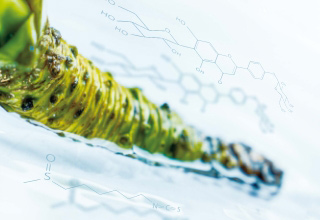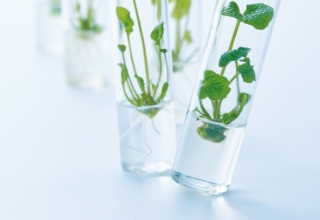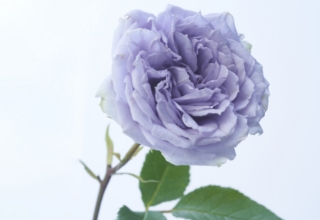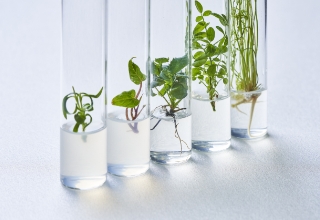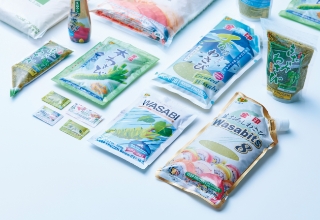- Top Page
- Wasabi Q&A
Wasabi Q&A
We answer frequently asked questions.
For those who want to know more about wasabi,
including real wasabi and horseradish.
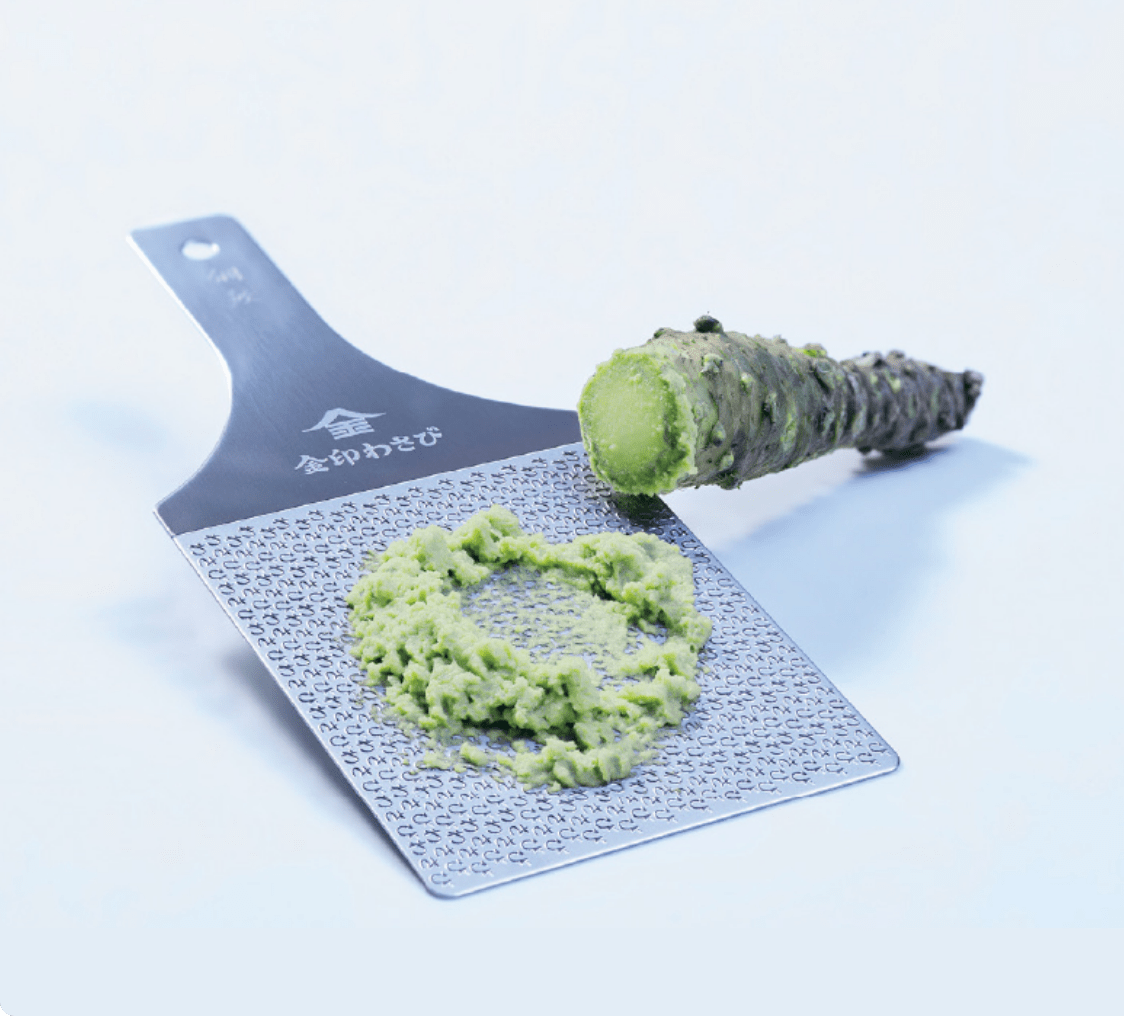
Wasabi FAQs
-
Q
Should wasabi be grated from the top or the bottom?
-
It is recommended to grate fresh wasabi from the top, where the leaf stalks (stems) are attached. The part of the wasabi used for grating is called the rhizome (or tuber), which is botanically classified as a stem. The upper part contains newer tissues. Because of this, the upper part has a more vibrant color and stronger aroma, making it ideal for grating from the top. Trim off a small portion of the stem, grate from the top, and if any wasabi remains, wipe off moisture, wrap it in a dry paper towel, place it in a plastic bag, and store it in the refrigerator. It will keep for about a month. Changing the paper towel regularly can help extend its freshness even further.
-
Q
Should wasabi be peeled?
-
The skin of fresh wasabi is said to contain a strong spiciness, so it is best to wash the surface with a scrubbing brush rather than peeling it. However, since the skin can have a slight bitterness and may darken when grated, you may peel it lightly according to your preference.
-
Q
What is wasabi?
-
-
Common Name: Wasabi
Scientific Name: Wasabia Japonica
English Name: Wasabi
Also Known As: Sawa-wasabi, Hata-wasabi
Plant Type: Perennial plant in the Brassicaceae family
Origin: Japan -
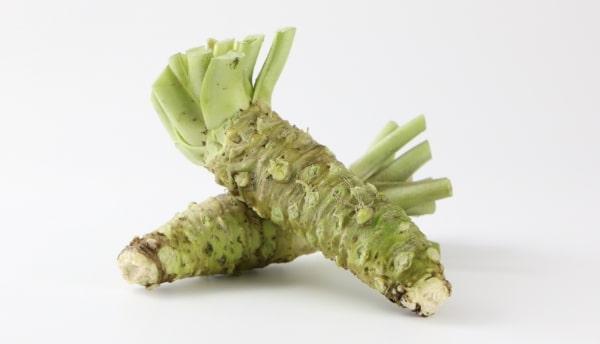
Wasabi is a plant native to Japan and was historically found growing wild in mountain streams.
Wasabi is categorized into Sawa-wasabi and Hata-wasabi based on cultivation methods. Sawa-wasabi is cultivated in wasabi fields (wasabi paddies) that are artificially built using mountain streams and fresh spring water. Hata-wasabi, on the other hand, is grown in cool, humid farmland.
Depending on the variety and cultivation method, wasabi generally takes about one to two years to grow from seedlings into a fully mature plant. The main production areas in Japan include Shizuoka, Nagano, Iwate, and Shimane prefectures. Wasabi is typically grated from the rhizome (often referred to as the imo) and used as a condiment for soba noodles, sashimi, and sushi. Grated wasabi has a vibrant green color, a slightly sticky texture, and a fresh, moist appearance. It is known for its refreshing aroma and distinctive spiciness. -
-
Q
What is horseradish?
-
-
Common Name: Horseradish
Scientific Name: Armoracia rusticana
English Name: Horseradish
Also Known As: Wasabi daikon, Yama-wasabi
Plant Type: Perennial plant in the Brassicaceae family
Origin: Europe -
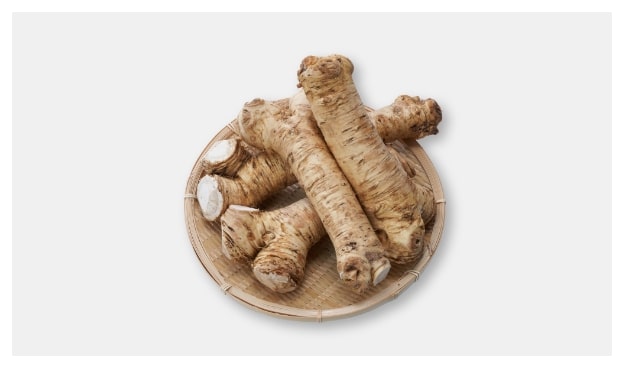
Horseradish is believed to originate from the temperate regions of Eastern Europe, spanning from Finland to the Caspian Sea. In Japan, it is cultivated in Hokkaido and other regions. It was introduced to Japan from the West during the Meiji era. Known as horseradish, it belongs to the same Brassicaceae family as wasabi, but its root can grow up to 30 centimeters long. Grated horseradish is white, less sticky, and has a sharp spiciness.
In Japan, it is grated and used as an ingredient in processed wasabi or dried and ground into powder for powdered wasabi.
In Hokkaido, it is called yama-wasabi and is often grated and served over warm rice as wasabi-meshi, or wasabi over rice, a beloved homemade dish.-
Product Information
Grated Hokkaido-grown horseradish, seasoned with soy sauce.
-
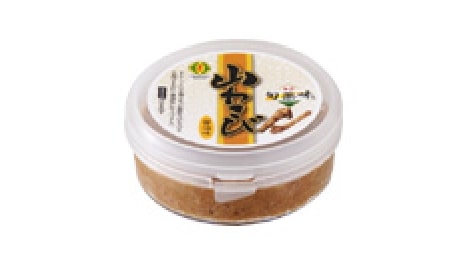
-
-
Q
What is the difference in aroma between wasabi and horseradish?
-
Both wasabi and horseradish contain allyl isothiocyanate as their primary spicy component, but their aromas differ significantly. Wasabi has a unique sweet, fresh, and green aroma.
Wasabi
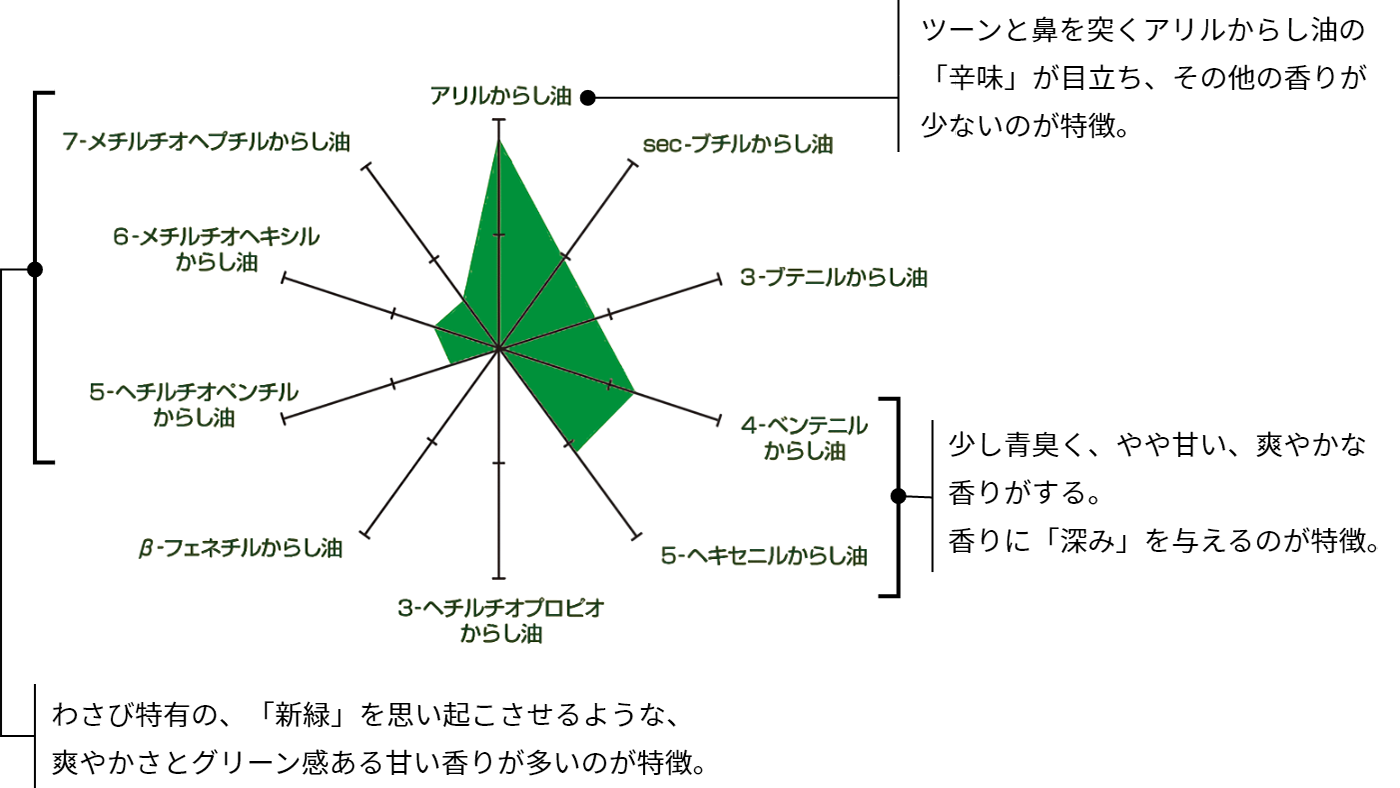
- Aわさび特有の、「新緑」を思い起こさせるような、爽やかさとグリーン感ある甘い香りが多いのが特徴。
- Bツーンと鼻を突くアリルからし油の「辛味」が目立ち、その他の香りが少ないのが特徴。
- C少し青臭く、やや甘い、爽やかな香りがする。香りに「深み」を与えるのが特徴。
Horseradish
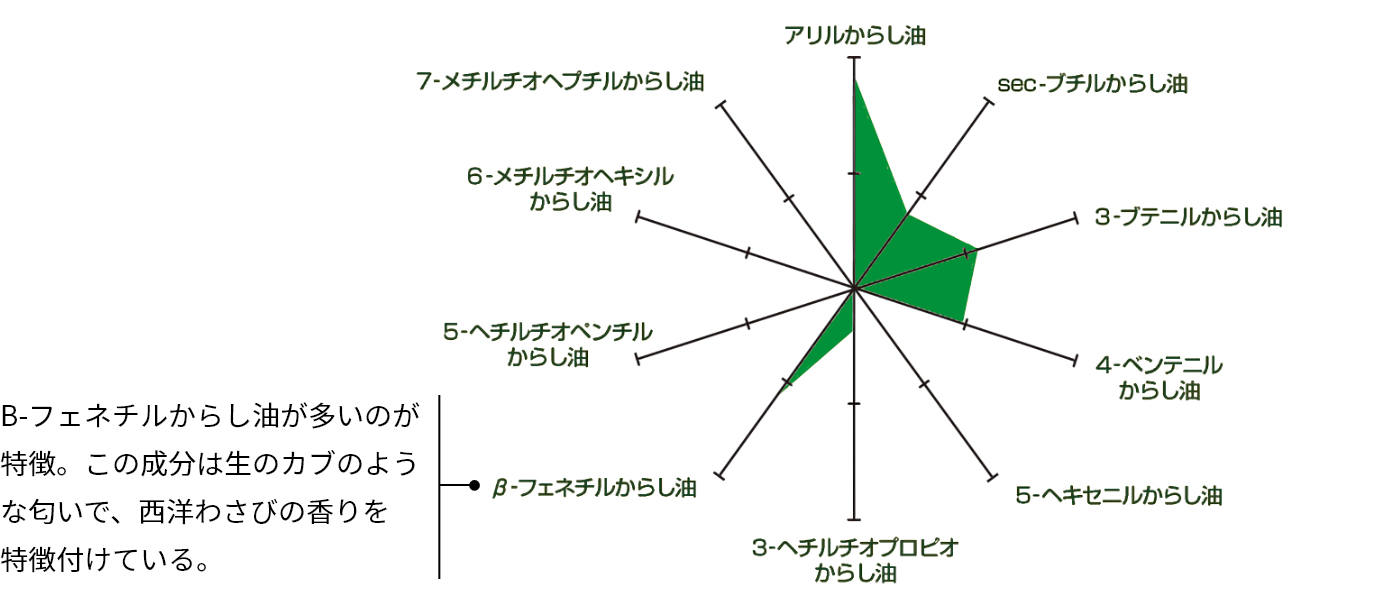
*The further outward on the radial diagram, the higher the concentration of the respective component. - AΒ-フェネチルからし油が多いのが特徴。この成分は生のカブのような匂いで、西洋わさびの香りを特徴付けている。
*The further outward on the radial diagram, the higher the concentration of the respective component.
-
Q
How is wasabi cultivated?
-
Wasabi is cultivated using two methods: hydroponic cultivation in mountain streams with fresh spring water and field cultivation in cool, humid farmland.
Hydroponic Cultivation
Wasabi grown using hydroponic cultivation thrives in water temperatures between 8 °C and 18.6 °C, with an optimal range of 12 °C to 13 °C. Even in mid-summer, the temperature should remain below 16 °C. A steady flow of clear, abundant water is required, making it a crop that can only be cultivated in select areas of Japan.
Hydroponic cultivation methods can generally be divided into the following types:Tatami-Ishi Method Keiryu Method Jizawa Method Heichi Method Main
Cultivation RegionsIzu Amagi Region Chugoku Mountain Region (Shimane, Tottori, etc.) Tama / Upper Abe River Region Hotaka / Azumino Region Cultivation Period 1.5 to 2 years 2.5 to 3 years 1.5 to 2 years 1 to 2 years Characteristics Requires a large volume of water.
Cultivated on terraced slopes.A method where sand is laid in a natural mountain stream to create a wasabi field, with large stones used to hold down seedlings. A modified version of the Keiryu method, creating structured wasabi fields similar to the Tatami-Ishi method.
Allows for effective use of limited spring water.Uses underground spring water.
Flatlands are excavated one to two meters deep.
Raised beds are created for planting.Cultivation Examples 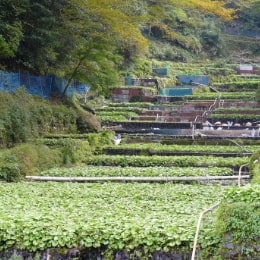
Example: Nakaizu, Shizuoka Prefecture 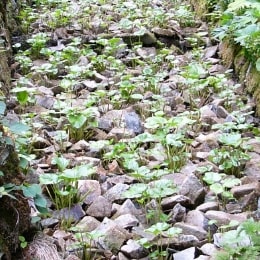
Example: Hikimi, Shimane Prefecture 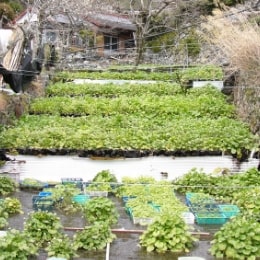
Example: Abe River, Shizuoka Prefecture 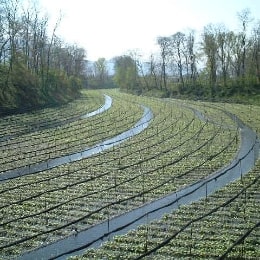
Example: Hotaka, Nagano Prefecture 畳石式 渓流式 おもな
栽培地域伊豆天城地方 島根・鳥取等の中国山系地方 栽培期間 1.5年~2年 2.5年~3年 特徴 豊富な水量が必要。
傾斜地を段々畑にして、栽培する。自然の渓流に砂を敷いて田を作り、大石で苗を押さえる方法。 栽培風景 
例)静岡県中伊豆 
例)島根県匹見 地沢式 平地式 おもな
栽培地域多摩・安倍川上流地方 穂高・安曇野地方 栽培期間 1.5年~2年 1年~2年 特徴 渓流式を改良して畳石式のようにわさび田を作り栽培する方法。
少ない湧き水の有効利用が可能。伏流水を利用している。
平坦地を掘り下げ(1~2m)てある。
畦を作って植付ける。栽培風景 
例)静岡県安倍川 
例)長野県穂高 Source: Processed Wasabi - Knowledge and Q&A, Japan Processing Wasabi Association
Field Cultivation
-
Field-cultivated wasabi is grown not in flowing water but in mountain farmland. Wasabi grown specifically in forested areas is called Rinkan-wasabi (forest-grown wasabi). It can be cultivated if conditions such as good drainage, cool summers, and warm winters are met. Compared to hydroponic cultivation, field cultivation is easier to establish.
-
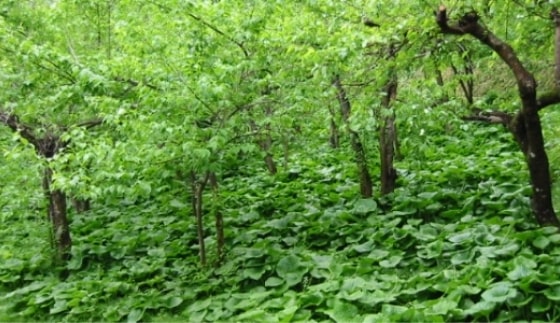
Example: Shitara, Aichi Prefecture
-
-
Q
Why is wasabi spicy?
-
The primary spicy component in wasabi is allyl isothiocyanate. If you bite into freshly harvested wasabi, you won't feel much spiciness. A strong spiciness is only released when the wasabi is finely grated. When wasabi is grated, its cell structure breaks down, activating an enzyme called myrosinase. This enzyme hydrolyzes mustard oil glycoside (sinigrin), creating the characteristic spiciness (allyl isothiocyanate) and aroma. Since allyl isothiocyanate is volatile, it quickly evaporates upon eating, delivering a sharp sensation to the nose and stimulating taste and smell receptors.
-
Q
Does wasabi really have antibacterial properties?
-
The spicy components of wasabi have antibacterial effects, inhibiting the growth of various foodborne pathogens such as E. coli, Salmonella, Vibrio parahaemolyticus, and Staphylococcus aureus. Wasabi also possesses antifungal properties that suppress the growth of mold and yeast.
Antibacterial & Antifungal Data for Wasabi
Microbial growth in the presence of 10 mg of plant essential oils
Test Sample Bacillus subtilis E. coli Saccharomyces yeast Aspergillus mold Allyl isothiocyanate - - - - Bois de rose oil + + + - Coriander oil - + + ± Citronella oil + + - - Eucalyptus oil ± ± - - Ho leaf oil ± + ± - Lemon grass oil - + + - Olibanum oil - + + - -:No growth observed, +:Growth observed, ±:Uncertain result.
(Ministry of Agriculture, Forestry and Fisheries, National Food Research Institute)<Explaining the Data>
Experiments were conducted using various plant essential oils (aromatic compounds), including allyl isothiocyanate, the spicy component of wasabi, in a sealed petri dish. The results confirmed that allyl isothiocyanate had the strongest inhibitory effect on all four types of microorganisms tested—Bacillus subtilis, E. coli, Saccharomyces yeast, and Aspergillus mold.
Furthermore, when experiments were conducted using allyl isothiocyanate (AITC), the primary component of mustard oils, even a small amount (31 to 420 micrograms per petri dish) was sufficient to inhibit the growth of all tested bacteria.Note: 1 microgram (µg) is one-millionth of a gram.
Effect on Parasites
Changes in the movement of Anisakis parasites
Wasabi paste Powdered wasabi Wasabi 0.5g 2.0g 0.5g 2.0g 0.5g 2.0g 5 min Medium Medium Strong Weak Medium Medium 15 min Weak Weak Medium Paralyzed Strong Weak 30 min Weak Paralyzed Weak Paralyzed Weak Paralyzed 60 min Immobile Immobile Immobile Immobile Weak Immobile Strong…Moving forward actively, Medium…Only wiggles its body, Weak…Only wiggles its body loosely,
Paralyzed…Unresponsive to stimulation but starts moving after 24 hours, Immobile…Remains immobile even after 24 hours.(Tokyo Metropolitan Research Laboratory of Public Health, Murata Iwao et al., 1988)
<Explaining the Data>
Three types of wasabi—paste, powdered, and fresh—were tested by measuring 0.5 g and 2.0 g of each, dispersing them in 0.4% saline, and introducing Anisakis parasites to observe how quickly their movement slowed. Although there were slight differences among the three types of wasabi, all Anisakis parasites became inactive (movement became dull) within 15 minutes. This effect is also attributed to allyl isothiocyanate, the spicy component of wasabi.
-
Q
What kind of processed wasabi are there?
-
Processed wasabi is broadly classified into powdered wasabi and paste forms (tube wasabi and grated wasabi).
-
Powdered Wasabi
A product primarily made by drying and powdering horseradish. It is used by mixing with water to form a paste. Available in cans, pouches, and other packaging forms.
-
Wasabi Paste
A product made by mixing water with dried and powdered wasabi and horseradish, then processing it into a paste. Available in tubes, pouches, and other packaging forms.
-
Grated Wasabi
A product made from fresh wasabi and horseradish, available in tubes, pouches, and other packaging forms.
The ratio of wasabi to horseradish varies depending on the product.
-
-
Q
What is the difference between "wasabi used" and "wasabi added" in processed wasabi products?
-
The Japan Processing Wasabi Association has established the following standards for labeling "wasabi used" and "wasabi added." If wasabi accounts for 50% or more of the product, the label must state "wasabi used" along with a note nearby stating "wasabi blended (or mixed) with horseradish." If wasabi accounts for less than 50% of the product, the label must state "wasabi added" along with a note nearby stating "horseradish blended (or mixed) with wasabi."
-
Q
What is the shelf life of small packets of wasabi for sashimi?
-
Small packets of wasabi used as condiments, typically around two grams in size, have limited space for labeling and are not required to display an expiration date. For products without an expiration date, it is recommended to use them immediately along with the purchased food rather than storing them.


